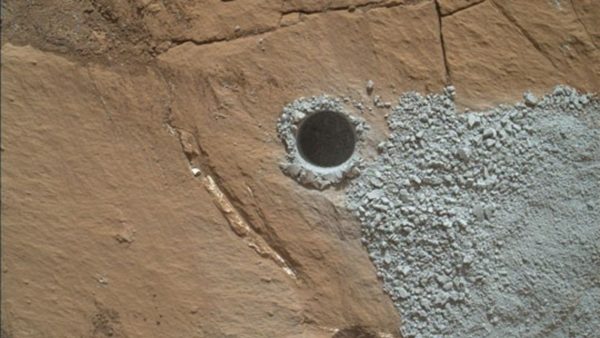
A mysterious Martian mineral that has perplexed scientists since its discovery seven years ago may have been spat out during an unusual volcanic eruption, researchers have revealed. The mineral, which is normally only found on Earth, was likely formed on the Red Planet more than 3 billion years ago.
NASA’s Curiosity rover discovered the mineral inside a rock at the heart of the 96-mile-wide (154 kilometers) Gale crater on July 30, 2015. The rover drilled a small hole into the rock and extracted a silver-colored dust sample. Curiosity’s onboard X-ray diffraction laboratory analyzed the dust and detected tridymite — a rare type of quartz made entirely of silicon dioxide, or silica, that is formed by certain types of volcanic activity.
The unusual find was totally unexpected. “The discovery of tridymite in Gale crater is one of the most surprising observations that the Curiosity rover has made in 10 years of exploring Mars,” study co-author Kirsten Siebach, a planetary scientist at Rice University in Houston and a mission specialist on NASA’s Curiosity team, said in a statement.
“Writer Fuel” is a series of cool real-world stories that might inspire your little writer heart. Check out our Writer Fuel page on the LimFic blog for more inspiration.

